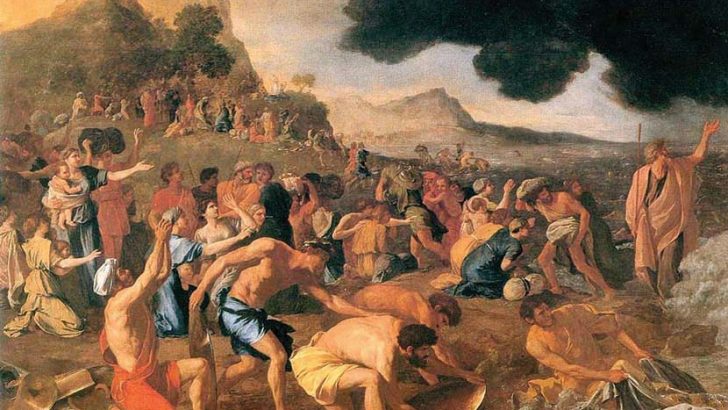Notebook
I had the privilege some years ago of participating in an academic conference in Athens, the city where so many elements of Western civilisation flourished for the first time: democracy, the writing of history, philosophy, and, perhaps most thrillingly, theatre.
In Athens, religious festivals were marked by great dramatic competitions, in which tragedies composed by the likes Aeschylus and Sophocles, and comedies by Aristophanes and others, would be performed in open-air amphitheatres for citizens, arousing and educating in them the emotions of fear, pity, and joy. When the Romans conquered Greece, they borrowed this art form, and stages popped up all over the Roman world, including Roman Britain.
Casualties
Drama was, however, one of many casualties of the Germanic invasions that led the Roman Empire itself to crumble. For several centuries, it was a dead art form, but its resurrection took place, appropriately, in the context of Easter celebrations. In the 10th Century, monks and nuns celebrating the resurrection of Jesus began to re-enact the finding of the empty tomb, adding progressively more dialogue, props, and dramatic tension to the re-enactment.
In some cases, nuns representing the myrrh-bearing disciples of Jesus would wander around the church, seeking the body of their Lord, before being interrupted by the angel asking, “Whom are you seeking?” When he announced the news of the resurrection of Jesus, the whole choir would erupt with chanted Alleluias.
For several centuries these liturgical dramas, associated especially with Easter and Christmas, flourished within religious communities, but in the later Middle Ages, especially in England, these plays moved out onto the street, being organised and acted by laypeople. These plays were often performed on Corpus Christi, dramatising Bible stories, from the creation to the last judgment, including the best-known stories about Noah, Abraham and Isaac, Moses, and so on, with a special focus on the death and resurrection of Jesus.
Each scene would typically be performed on mobile wagons which would stop at different ‘stations’. The audience gathered at each station would see each of plays performed in order, leading them through the story of their salvation. While the plays were edifying, there was also plenty of room for humour, usually through characters like Mrs Noah, Balaam and his ass, and St Joseph.
Evidence
Although there’s no evidence for such plays being performed in Gaelic Ireland, Anglicised towns like Dublin and Kilkenny had thriving traditions of biblical drama. A 1498 list of Corpus Christi plays to be performed in Dublin survives to this day. Not only does it identify the plays to be performed on the feast – Adam and Eve, Cain and Abel, the Exodus from Egypt, and so on as far as Christ’s death and resurrection – it also assigns responsibility for each play to a particular guild: the glovers put on the story of Adam and Eve (fitting, since they were used to stitching animal skins, just as Adam and Eve learned to do); the mariners and shipwrights joined forces to build Noah’s Ark; the goldsmiths kitted out the Magi; the guild of fishermen acted out the twelve apostles; and the tailors made the fancy attire of Pilate and his wife. From elsewhere we know that each guild would do its best to outdo all the others in the quality of the costumes and the skill of the actors.
We sometimes imagine the laity in the Middle Ages to have played a passive role in the life of the Church, but the tradition of these biblical dramas points instead to a lay culture that was devout and creative, with a dose of healthy competition. Definitely an example worth pondering in our own time.
Crafting a city’s devotional life
The craft guilds which put on some of these plays were not only an important part of Dublin’s commercial and civic life, they were major players also in the devotional life of the city, being religious brotherhoods as much as trade associations. Apart from patronising biblical dramas, each guild would organise lavish celebrations on their patronal feast, and maintain the regular lighting of candles and celebration of Mass in the guild chapel. The guild of merchants, for example, had their chapel in Christchurch, the carpenters in St Thomas’ Abbey (modern Thomas St), and the weavers in the Carmelite Church on Whitefriar Street, not far from where the Carmelites are located today.
Making Athenians laugh for millenia
During a break in the conference I attended in Athens, I popped to a cafe for a break from all the theology. The waitress spotted that I was reading the ancient comedy Lysistrata, by Aristophanes. She told me it was her favourite play, and began to recall its scenes, cracking up in laughter as she remembered the wonderful lines. I imagine the old comedian would be delighted to know that his jokes are still making Athenians laugh, nearly two-and-a-half millennia after his birth.



